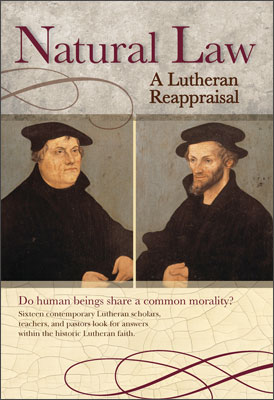Emerson Eggerichs, Love and Respect: The Love She Most Desires, the Respect He Desperately Needs (Nashville: Thomas Nelson, 2004)
I was only a few months into the ministry when couples began seeking me out for counseling. Quickly realizing the need to supplement my seminary training, I started devouring books like His Needs Her Needs (Harley Willard), Sacred Marriage (Gary Thomas), As for Me and My House (Walter Wangerin, Jr.), Divorce Busting (Michele Weiner-Davis), The Peace Maker (Ken Sande), and at least a dozen others.
All were helpful, but none as instantly useful as Dr. Emerson Eggerichs’s Love and Respect. I read this book with increasing excitement, thinking “This is true. This will work. This will work because it’s true. People will ‘get’ this.” And people have gotten it. Love and Respect (and Eggerichs’s subsequent book Cracking the Communication Code) have transformed my counseling and dramatically influenced couples’ lives in positive and lasting ways.

Based on Ephesians 5:33 ... Eggerichs makes the simple but profound assertion that love and respect are “primary needs” for women and men ... that women need love and men need respect like they need air to breathe.
What’s at the root of this revolution? Based on Ephesians 5:33 (“Each one of you also must love his wife as he loves himself, and the wife must respect her husband.”), Eggerichs makes the simple but profound assertion that love and respect are “primary needs” for women and men, respectively (17)—that women need love and men need respect like they need air to breathe (37). From this foundation he develops the theory that “the Love and Respect Connection is the key to any problem in a marriage” (15). It’s a bold claim, but one that my studies and counseling experience have borne out.
How does Eggerichs arrive at this thesis? In considering why serious marital problems persist even within the church despite the recent proliferation of books on marriage, he finds the root of the problem in the failure to use the “whole truth” of Scripture (29). To solve such problems, “the first step is ... to hear what God’s Word clearly says” (30). Eggerichs begins at the beginning: “The opening chapters of Genesis tell us God created them male and female. That’s hardly news. But what it underlines is that men and women are very different” (32) (cf. SA III, XI, 2).
Referencing numerous Scripture passages, Eggerichs further unpacks this complementary view of spousal roles: husband and wife are equal in salvation and redemption, but in marriage, “the husband is to be considered ‘first among equals’” (53). The husband “is to be the first to provide, to protect—even to die if necessary” (53). For her part, the wife needs “to be valued as ‘first in importance’” (54). When husband honors his wife “as first in importance and she respects him as first among equals, their marriage works” (54). The love and respect that God commands husband and wife to give in Ephesians 5 is exactly what God created husband and wife to need in Genesis 1. Husband and wife are both created and commanded to be the perfect complement: when spouses aligns themselves with God’s created and redeemed order, their marriage works.
To unpack his exegesis and support his thesis, Eggerichs organizes the book into three main sections: 1) The Crazy Cycle 2) The Energizing Cycle and 3) The Rewarded Cycle.
1. The Crazy Cycle
“Without love, she reacts without respect[;] and without respect, he reacts without love” ... and round and round they go (5). As Eggerichs explains, “Angry exchanges are caused when the husband appears careless, depriving his wife of love, and when the wife reacts with criticism and complaints that are vehement, depriving the husband of respect” (27). Every married couple of my acquaintance has gotten dizzy spinning on this vicious cycle, and spouses instantly recognize versions of themselves in the real-life scenarios woven through the book. In this section, Eggerichs explores the implication of the created differences between the sexes. The images and examples he chooses may sometimes seem corny, but couples seem to immediately resonate with and remember them. For instance, to illustrate the truth that men and women have different ways of processing the world and communicating, Eggerichs portrays women as experiencing the world through pink sunglasses and pink hearing aids while men experience it through blue sunglasses and blue hearing aids. The misunderstandings that result from these different “codes” of communication produce situations ripe for conflict, i.e., the Crazy Cycle. People seem to relate well to Eggerichs’s good-humored approach to informing couples about each spouse’s communication codes and needs.
Besides discussing the typical ways in which spouses misunderstand and misinterpret one another, this section and its appendix provide practical strategies to stop the Crazy Cycle from spinning. For example, Eggerichs suggests couples ask themselves, “Is what I am about to say or do going to feel unloving to her?” and “Is what I am about to say or do going to feel disrespectful to him?” He also encourages them to remember, “When she is being critical or angry, she is crying out for your love; her intent is not to be disrespectful.” Likewise, “When he is being harsh, or stonewalling [seemingly ignoring] you, he is crying out for your respect; his intent is not to be unloving” (305)
2. The Energizing Cycle
Eggerichs moves beyond strategies for stopping the Crazy Cycle to outline strategies for entering a healthy cycle in which spouses energize each other and their marriage by applying love and respect. In a nutshell: “his [the husband’s] love motivates her [the wife’s] respect; her respect motivates his love” (113).
Eggerichs encapsulates the Energizing Cycle in two acronyms. C-O-U-P-L-E (Closeness, Openness, Understanding, Peacemaking, Loyalty, and Esteem) is how Eggerichs encourages husbands “to spell love to your wife” (117). C-H-A-I-R-S (Conquest, Hierarchy, Authority, Insight, Relationship, and Sexuality) is how he encourages wives “to spell respect to your husband” (183).
Each letter of the acronyms has a chapter devoted to it that contains helpful Scriptural references along with “principles, techniques, and common sense to help husbands and wives learn how to practice the Love and Respect message on a daily basis” (116). Each chapter concludes with a list of helpful suggestions designed to give husbands and wives concrete action steps that will keep them off the Crazy Cycle and on the Energizing Cycle.
Whether they have had a struggling marriage or a strong one, spouses who read and apply the material in these chapters will almost instantly notice a positive change in their marriage. This, however, doesn’t mean that applying Eggerichs’s suggestions is easy. Much of what he says is quite challenging and requires thinking and acting in ways people are not used to doing. In all likelihood, women will find this section more challenging than men. Men are regularly instructed to love their wives unconditionally, but the message that a wife is to respect her husband unconditionally is rare, to say the least. While acknowledging that “unconditional respect” sounds “like an oxymoron” to some women (184), Eggerichs stands firmly on Scripture to remind women that God commands them to give their husbands their deepest need: unconditional respect. He grounds this not only in Ephesians 5:33, but foundationally in the created order of Genesis 1:27 and 2:18, 21-25.
Knowing how counter-cultural these assertions sound, Eggerichs addresses some of the reservations wives generally have about respecting their husbands unconditionally as he details the specifics of the respect women are to give to their husbands. While many women will feel challenged by Eggerichs’s suggestions, those who apply them discover that “respect does something to the soul of a man” (47). A wife’s unconditional respect motivates and energizes a husband’s love in ways she can scarcely comprehend.
3. The Rewarded Cycle
“His (the husband’s) love blesses regardless of her (the wife’s) respect; her respect blesses regardless of his love” (271). In this section, Eggerichs shifts the focus away from the earthly benefits that may result from applying love and respect, looking more closely at the heavenly reality. The Rewarded Cycle elevates marriage beyond itself to the very courts of heaven where it finds its source. As Eggerichs puts it, “Ultimately, all husbands and wives should be practicing Love and Respect principles first and foremost out of obedience toward Christ….In the ultimate sense, your marriage has nothing to do with your spouse. It has everything to do with your relationship to Jesus Christ” (272,279).
The main idea of this section—the lasting importance of faithful obedience to Christ in honoring one’s spouse—is particularly helpful for a person struggling in a difficult marriage. People often find it easier to love or respect their spouse out of obedience to Jesus than because he or she is acting in lovable or respectable ways. Eggerichs reassures the reader, “In marriage, everything you do counts, even if your spouse ignores you!” (271). Even if a wife’s best efforts to respect her husband or a husband’s best efforts to love his wife result in no discernible change, God promises to reward their faithfulness (cf. Apol. IV, 194, 355, 358, 368; SD IV, 38). Eggerichs shows spouses how “to develop the ability to give [one another] what he or she needs most as you bring your faith in Christ directly into your acts of Love and Respect. You will learn how a husband’s unconditional love mirrors Christ’s love for the church and how a wife’s unconditional respect is like the church’s reverence for Christ” (262-63).
In my teaching and counseling, as well as in my own marriage, I have become convinced that ‘the Love and Respect Connection is the key to any problem in a marriage.’
In my teaching and counseling, as well as in my own marriage, I have become convinced that “the Love and Respect Connection is the key to any problem in a marriage” (15). Though Eggerichs is not Lutheran, his book is solidly grounded on Scripture and his teaching on marriage is in harmony with the confessional Lutheran vision of The Hausvater Project (although his book does not address the vocation of parenthood). I eagerly recommend Love and Respect and Cracking the Communication Code to every married couple, pastor, and counselor. Besides being solidly Scriptural, Eggerichs’s material is instantly applicable to real marriages, as the scores of letters and anecdotes peppered throughout the book testify. Moreover, his style is highly approachable and easily comprehended.
More information about Love and Respect, plus Dr. Eggerichs and his wife Sarah, is available on their website (www.loveandrespect.com), including details on Love and Respect marriage weekends.
Pastor Jonathan Conner of Zion Lutheran Church in Manning, Iowa, is a former board member for the Hausvater Project.




